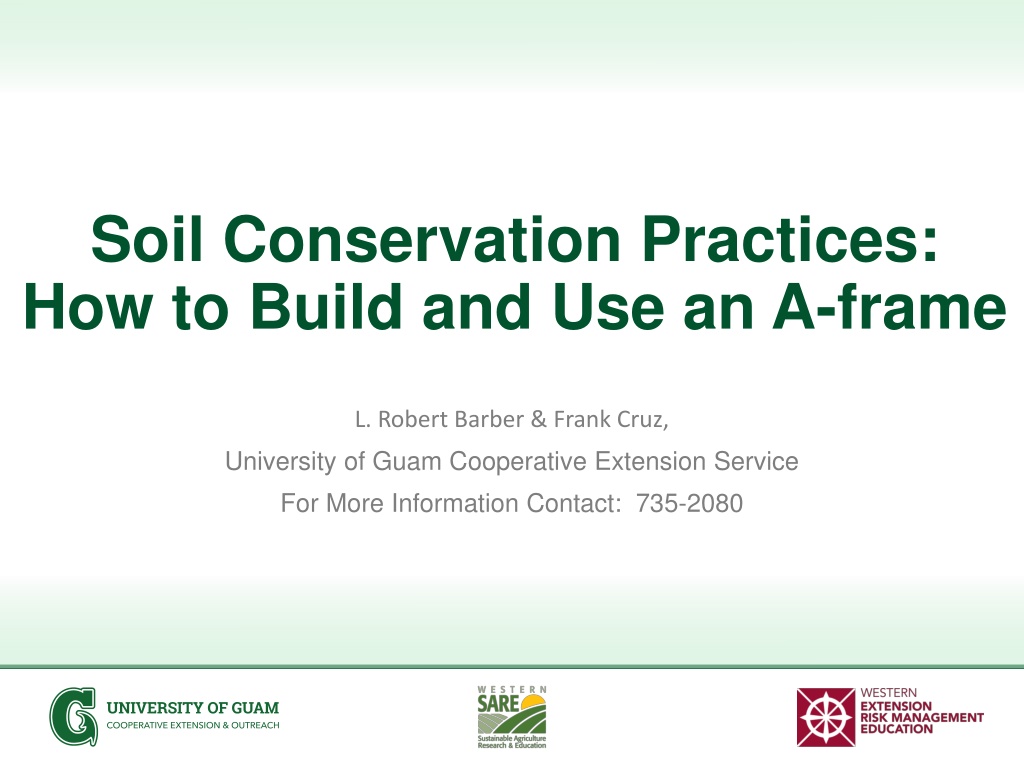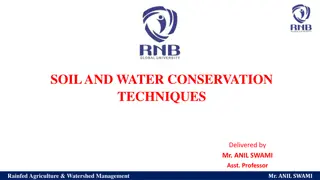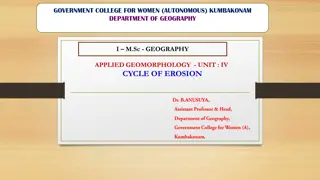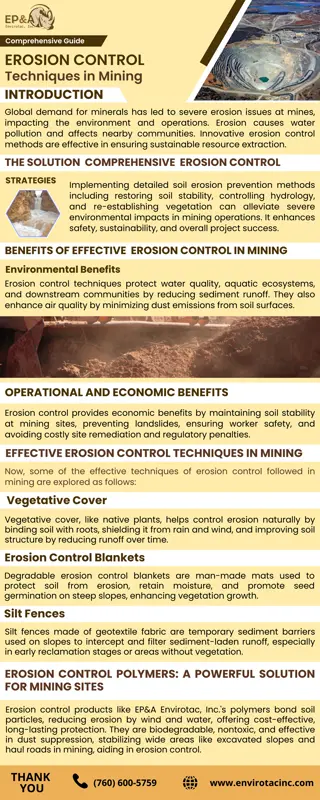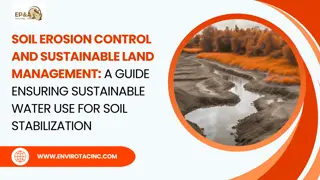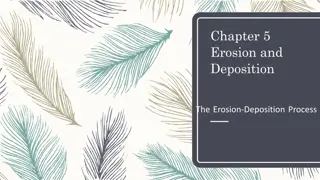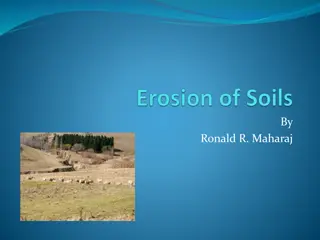Soil Conservation Practices: Building an A-Frame for Erosion Control
Learn about the importance of soil conservation practices and how to build and utilize an A-frame tool for erosion control. Discover the causes of soil erosion and effective techniques like contour lines, contour planting, and vegetative barriers to prevent soil degradation. Find out how to construct an A-frame with simple materials and steps for marking contour lines in sloping lands to combat erosion efficiently.
Download Presentation

Please find below an Image/Link to download the presentation.
The content on the website is provided AS IS for your information and personal use only. It may not be sold, licensed, or shared on other websites without obtaining consent from the author. Download presentation by click this link. If you encounter any issues during the download, it is possible that the publisher has removed the file from their server.
E N D
Presentation Transcript
Soil Conservation Practices: How to Build and Use an A-frame L. Robert Barber & Frank Cruz, University of Guam Cooperative Extension Service For More Information Contact: 735-2080
Causes of Soil Erosion No Cover on the soil (plants or mulch) Fire Clearing Sloping lands water movement Wind Organic matter loss due to intensive production without replacement
Conservation Practices For: Erosion Control on Sloping Lands Production practices following the contour Contour tillage Contour Plantings Vegetative Barriers & Filter strips Contour (hillside) ditches Contour hedgerows Soil Cover and Anchoring Mulching Cover crops Grass Waterways
What is a Contour Line? A contour line is a level line across a slope. Contour practices help prevent soil erosion Stops or slows downhill flow of water carrying soil particles Marking contour lines indicate where to place barriers like: Contour canals Orchard plantings and hedgerows Vegetative barriers Row Crops
What is an A-frame A simple cheap technology for marking contour lines. Three pieces of wood assembled into an A with a plumb bob. Once the plumb line is calibrated it shows when the two points of each leg are level.
Materials: 3 relatively straight pieces of wood Machete or Saw & drill String, Nails or bolts Stakes or other marking method Stone or plumb bob Pencil
Building the A-Frame: Take two equal length poles about 6 feet long and one shorter pole about 4 feet long. Tie them together to make a capital A
Building the A-Frame: Tie the string to the top of the A-Frame Attach the stone or plumb to the other end of the string. Make sure the string extends beyong the horizontal crossbar of the A-Frame
Calibrating the A-Frame Place it on level ground Mark the ground where the legs stand Use a pencil to mark where the string crosses the horizontal crossbar
Calibrating the A-Frame Turn the A-Frame so each leg stands exactly where the other stood Use a pencil to make a second mark where the string crosses the horizontal crossbar Make a heavy notch or mark at the midpoint between the two marks
Marking the Contour Choose a place on the slope where you would like the contour line to begin Mark where the first leg is positioned using a stake, stone, or marking paint Swing the second leg so that the string crosses the crossbar at the notch
Marking the Contour The two points of the A-frame legs are level. This is the beginning of the contour line. Now mark the spot where the second leg stands. Keeping the second leg in place pivot the first leg around. Move the first leg up or down the slope until the string aligns with the notch. Mark the new location of the first leg and continue this process until you reach the end of the field or where you want the line to end. The marks on the field will show a contour line across the slope.
Contour Practices The following contour practices increase water retention and reduce soil erosion Contour trenches Vegetative barriers and filter strips Contour tillage Contour planting of a crop Contour plantings of nitrogen fixing hedgerows Contour plantings of windbreaks and orchard trees
Closing Thoughts Key to success of each practice is to locate the contour lines The A-Frame is simple and inexpensive tool that can be built and utilized in almost any situation to identify contour lines
